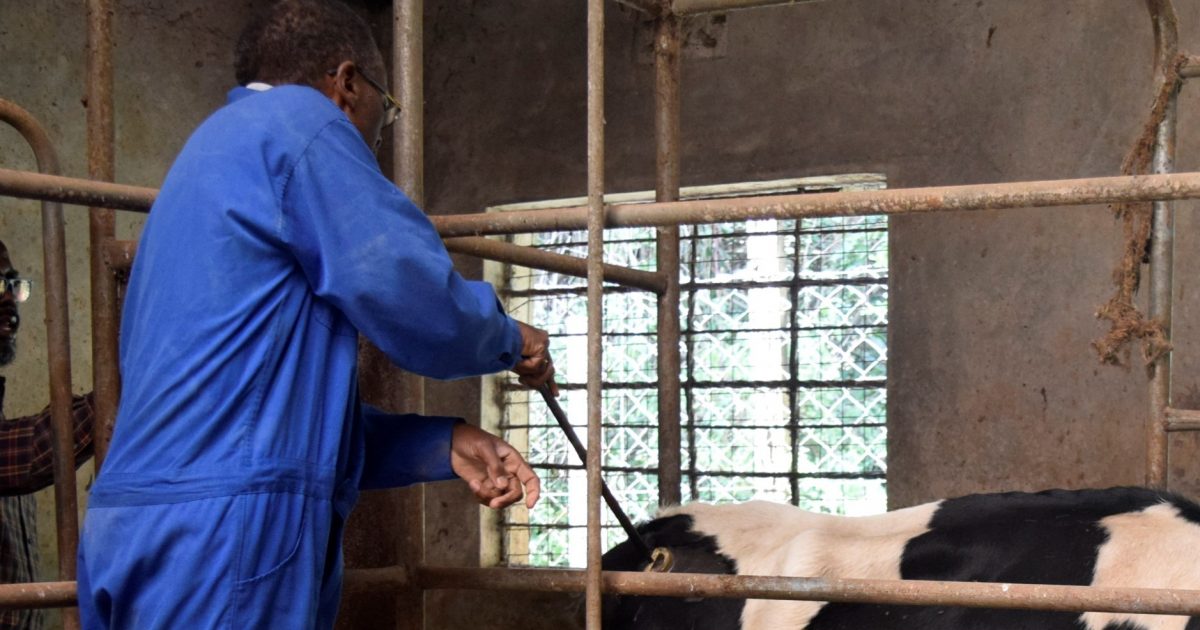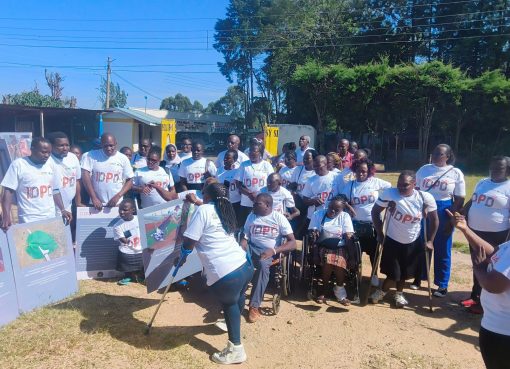Living on the brink of the Rift Valley escapements, Fred Kinyua Ndoro’s farm has for decades attracted cattle rustlers and stock thieves.
His efforts to brand his cattle using hot iron and tagging did little to keep the thieves away, with the marks fading off as the cattle matured.
We visit his Ndoro farm bordering Nakuru and Nyandarua Counties in Igwamiti ward, Laikipia County to find him preparing his heifers for branding.

This time around, not with the scary hot iron that he says left his cattle scared and with wounds that would take time to heal and expose them to bacterial infection.
“I have adopted freeze branding as a way of giving my cattle identity in a humane way.
“It was hard for me and my neighbours to describe or identify our animals on recovery after they had been stolen, and this meant we lost our livelihood as some of us were unable to afford to replace the animals,” says Ndoro.
He prepares his cattle by shearing off hairs on black or brown surfaces as the branding leaves white marks on the cattle.
He mixes the dry ice with methylated spirit to increase its surface area and volume for easy freezing of the copper rods imprinted with the desired letters.
“It takes around 10 minutes to freeze the metal after which branding a single animal takes an average of three to five minutes. Each letter must be given an average of 30 seconds to get imprinted on the cattle’s hide,” says the self-taught Kinyua, who bumped on the method in his internet research on dairy farming in Europe and America.
With his bare hands, Kinyua removes the chilled copper letters, attached to a brass handle to comfortably brand his cattle, while they feed.
“This technique freezes the animal’s hair follicles causing the branded area to grow highly visible white hair.
“The dry ice or liquefied carbon dioxide marks cannot be removed from the animal as long as they live; leaving a shiny white mark on the dark surface that expands with maturity.
“The method is a more humane option and has become the preferred method for ownership markings,” says Mr. Kinyua.
The farmer, who also practices large-scale crop and fruit farming, says hot iron branding of cattle caused psychological traumas to the animal thus affecting its ability to feed, further compromising its milk production, while the animal nursed the wounds.
He prefers to brand heifers as the branded area grew more visible with maturity, while they also suffered less trauma compared to cows at milking stages.
“Freeze branding is relatively painless and a very effective form of permanent animal and herd identification.
“While hot iron branding is used to make a neat, legible scar on the surface of the hide, freeze branding converts hair pigmentation to white in a legible manner, without defacing the skin,” notes Kinyua, noting that the skin lost its value with iron branding, as the procedure was repeated each year.
The major challenge with this method of branding, he cites, is getting the dry ice because the producers are concentrated in Nairobi.
He, therefore, urges the dry ice manufacturers to decentralize their dry ice-making facilities since the use of dry ice is gaining popularity by the day.
He says that he has not had any cases of cattle theft since he adopted freeze branding.
“The legal deterrent that if you are caught with a stolen animal and get convicted you serve a jail term of over seven years, has also served to keep the raiders at bay,” noting that the method is unique and saved him the effort of branding annually.
While opening his doors to farmers who would like to learn and adopt the method, Kinyua who has dedicated all his time to dairy farming, notes that the high cost of the ice could be easily offset if more farmers teamed up.
“I urge my fellow farmers to learn more about the freeze branding and adopt it as it is more humane and is only done once in an animal’s lifetime, unlike hot branding.
“I am ready to teach other farmers how freeze branding is done and the more we become, the more affordable, the ice will become.”
Carbacid CO2 limited’s Sales lead and Engineer, Chris Gitau, says that the company mined and manufactured carbon dioxide (CO2) which they liquefy to produce dry ice which is solid-state.
“I am here to support Mr. Ndoro who has been a customer for our ice and we want to see how he uses dry ice in freeze branding his animals.
“We are interested in developing other uses of dry ice since we have seen it being used by Artificial Inseminators in preserving the semen, instead of nitrogen,” said Gitau
The biggest challenge with the solid dry ice, he says, is storage as it changes from dry ice to gas at -79 degrees Celsius, without turning to liquid. This meant that storage can only be done in special boxes of Styrofoam.
By Antony Mwangi




